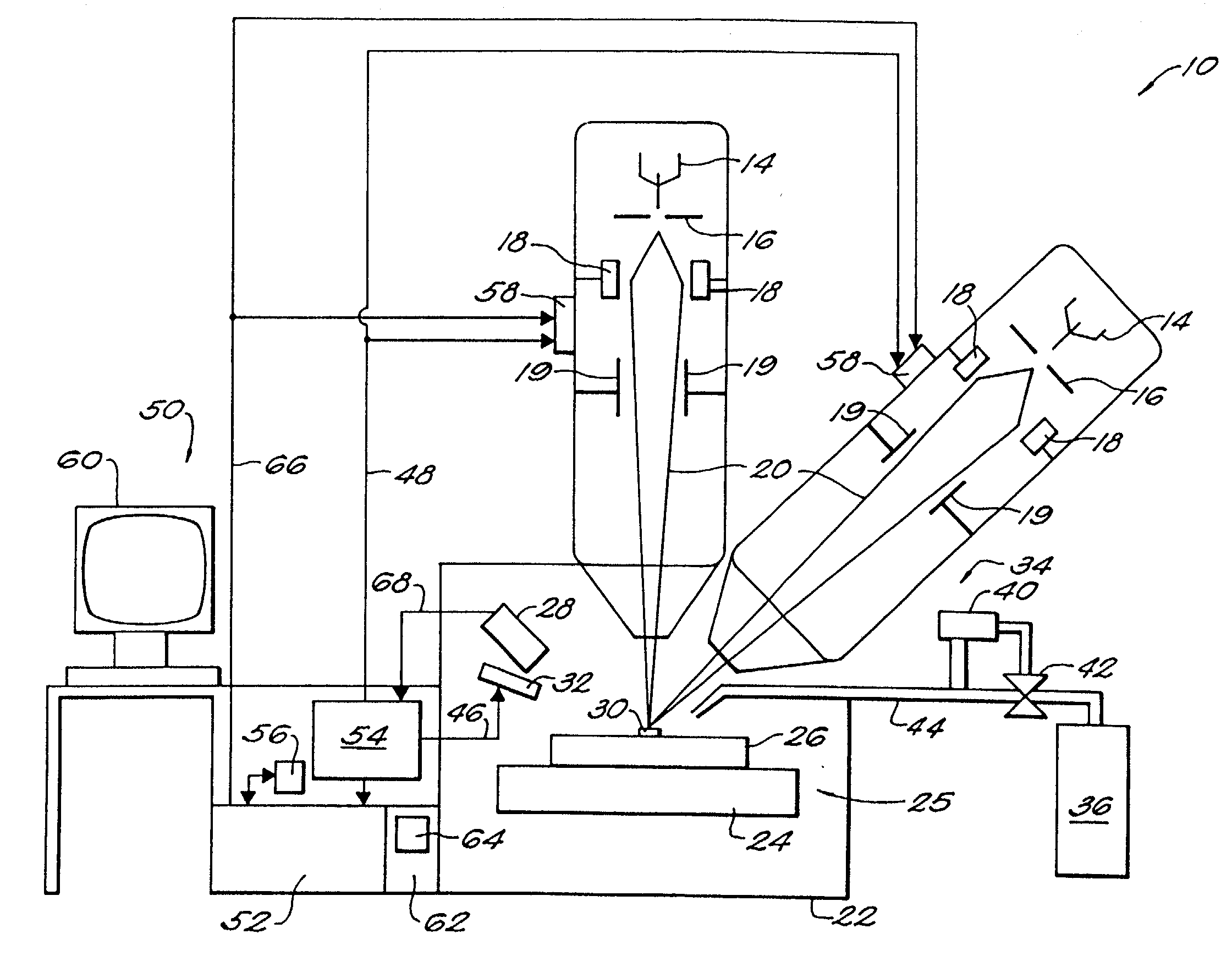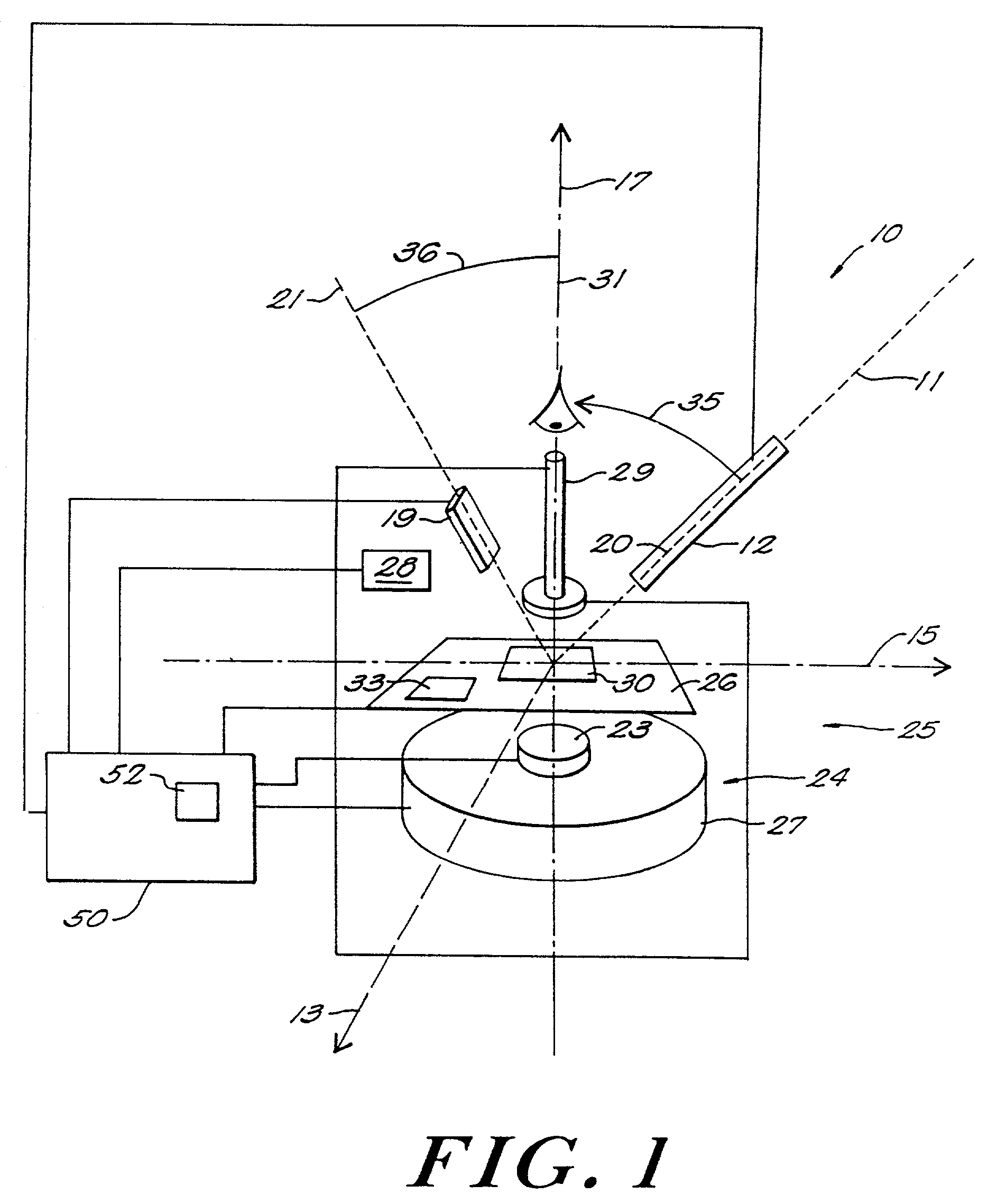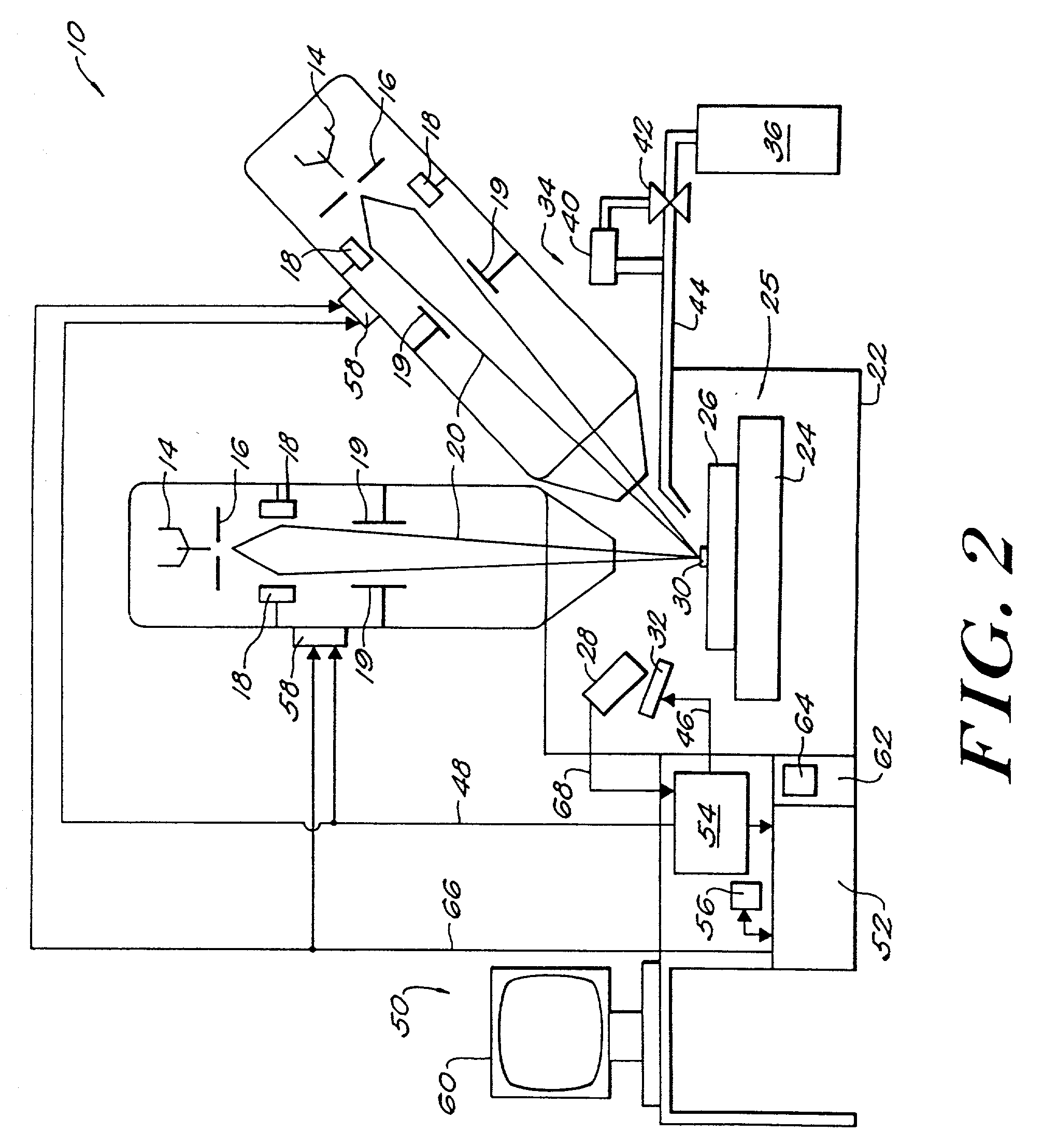Focused particle beam systems and methods using a tilt column
a technology of focused particle beams and beam systems, applied in the direction of mass spectrometers, nuclear engineering, stability-of-path spectrometers, etc., can solve the problems of large system weight, high cost of cleanroom fabrication space, and inability to meet the requirements of the work stage, so as to improve the stability of the work stage assembly
- Summary
- Abstract
- Description
- Claims
- Application Information
AI Technical Summary
Benefits of technology
Problems solved by technology
Method used
Image
Examples
Embodiment Construction
[0051]The system 10 illustrated in FIG. 1 with a tilted ion beam column 12 can etch a cavity in a sample to create a vertical cross-section and then image the vertical cross-section without tilting the work stage assembly 25. FIG. 1 depicts one embodiment of a focused particle beam system 10 according to the invention for interacting with a workpiece 30. The system 10 of FIG. 1 includes a tilted ion column 12, a vacuum chamber 22, and a work stage assembly 25. The system 10 provides a focused particle beam system that can precisely etch and image a cross-section of a sample or workpiece 30, e.g., a wafer containing semiconductor devices. The sample is seated within the vacuum chamber 22 and operated on by a particle beam generated by the tilted column 12 to create cross-sectional images. The images are used to analyze material defects found in the wafer, and can provide process engineers with timely data without removing the wafer from the production line.
[0052]Part of the ion colum...
PUM
| Property | Measurement | Unit |
|---|---|---|
| Angle | aaaaa | aaaaa |
| Angle | aaaaa | aaaaa |
| Angle | aaaaa | aaaaa |
Abstract
Description
Claims
Application Information
 Login to View More
Login to View More - R&D
- Intellectual Property
- Life Sciences
- Materials
- Tech Scout
- Unparalleled Data Quality
- Higher Quality Content
- 60% Fewer Hallucinations
Browse by: Latest US Patents, China's latest patents, Technical Efficacy Thesaurus, Application Domain, Technology Topic, Popular Technical Reports.
© 2025 PatSnap. All rights reserved.Legal|Privacy policy|Modern Slavery Act Transparency Statement|Sitemap|About US| Contact US: help@patsnap.com



